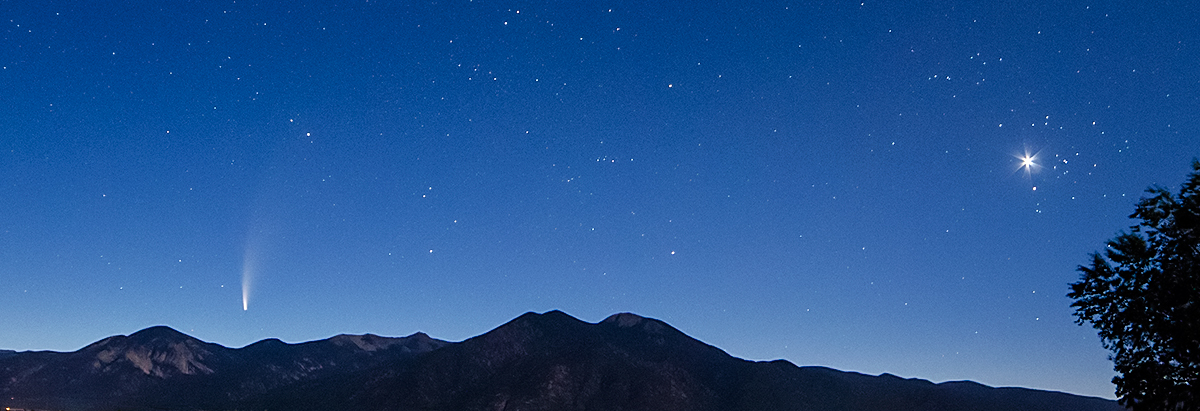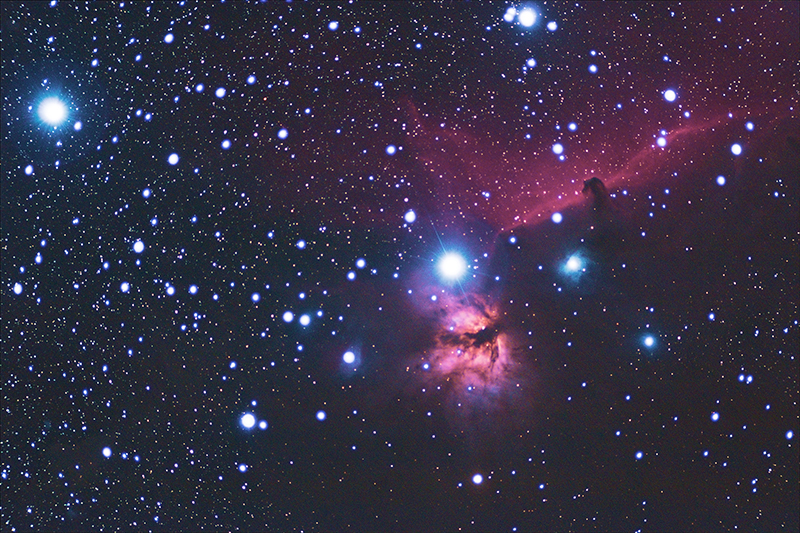
Welcome to taosastronomer.com!
offering
local "hands-on" observing
(visual and imaging) sessions and instruction
viewing and imaging from Rabbit Valley Observatory
a dark sky location on the mesa just west of Taos, NM
 |
Image obtained 3-09-2015 through RVO's Megrez 80mm refractor, using a Baader-modified Canon XSi DSLR and BackyardEOS image-acquisition software -- 15 stacked 360-second luminance frames combined with multiple dark, flat and bias calibration frames shot at ISO 1600 and totaling more than 120 minutes were used to create this image; optics driven by the Losmandy G-11 mount equipped with Ovision's precision RA worm gear, guided with an Orion SSG3 Monochrome CCD camera using Maxim DL Pro and post-processed with DeepSkyStacker and Photoshop CS3. [image copyright Rabbit Valley Observatory/Willis Greiner, 2015 -- all rights reserved] The bright star Alnitak (Zeta Orionis, the easternmost star in Orion's belt) is at the center of one of the most remarkable and picturesque regions in the sky. The radiation of this hot star excites the gas in the surrounding nebulae and causes it to emit light. The nebula strip running south (to the right in the photo) from Alnitak is the designated IC 434, into which the famous dark nebula called the Horsehead Nebula (Barnard 33) protrudes from the eastern side. The dark nebula's shape resembles the head and neck of a horse, hence its name. Dark nebulae are clouds of dust in space that obscure stars and other objects behind them. The red nebula that delineates the Horsehead is known as Orion B, or NGC 2024. The blue nebula near center is NGC 2023, the purplish nebula left and below Alnitak is IC 432, and the dim blue nebula above IC 432 is IC 431. Several dark lanes overlay it; the main one of these splits NGC 2024 into two parts. This nebula certainly has a flame-like appearance. Its western part is also overlaid by blue glare from the star Alnitak. The unusual color of this nebula has been noticed, in color photographs it usually appears yellow or a sort of orange almost unique to this object. Below and to the left of the Horsehead the blue reflection nebula NGC 2023 is located. The Flame Nebula and the Horsehead are approximately 1,500 light years from Earth, and they are part of the same huge complex of nebulae that glow in and around Orion. [information compiled from various internet sources] |
(all content copyright 2015-2019 Willis Greiner Photography, all rights reserved)